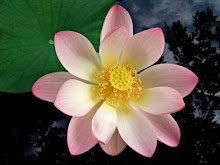
Japanese Honeysuckle
Lonicera japonica
Habitat
Perennial herb Native to E. Asia - China, Japan, Korea, now naturalized in Britain and the US from southern New York and New Jersey south to southern Florida and west to southwestern Texas. Inland it is distributed from Pennsylvania and West Virginia west to Missouri, Kansas, and Oklahoma. Widespread in the eastern and southern United States. Japanese honeysuckle is an important white-tailed deer food and is often invasive. Cultivation: prefers partial shade to full sun and moist soil. Prune back hard in winter to prevent the build-up of woody growth, provide a trellis. Climbing Vine, Shrub, it has a dense root system that may extend laterally for a distance of 7 to 10 feet, and attain depths of 3 to 4 feet. The simple, opposite, pinnate leaves are oval to oblong in shape and are semi-evergreen and may persist on vines year-round, up to 3 inches in length. The extremely fragrant, two-lipped flowers are borne in pairs in the axils of young branches and are produced throughout the summer. Flowers range from 1 to 2 inches in length and are white with a slight purple or pink tinge when young, changing to white or yellow with age, they are edible. The fruit is a black, berrylike drupe with three to five one-seeded stones.
Properties
Japanese honeysuckle is edible and medicinal. High in Calcium, Magnesium, and Potassium, the leaves can be parboiled and eaten as a vegetable. The edible buds and flowers, made into a syrup or puddings. The entire plant has been used as an alternative medicine for thousands of years in Asia. The active constituents include calcium, elaidic-acid, hcn, inositol, linoleic-acid, lonicerin, luteolin, magnesium, myristic-acid, potassium, tannin, and zink. It is alterative, antibacterial, antiinflammatory, antispasmodic, depurative, diuretic, febrifuge, and is also used to reduce blood pressure. The stems are used internally in the treatment of acute rheumatoid arthritis, mumps and hepatitis. The stems are harvested in the autumn and winter, and are dried for later herb use. The stems and flowers are used together a medicinal infusion in the treatment of upper respiratory tract infections (including pneumonia) and dysentery. An infusion of the flower buds is used in the treatment of a wide range of ailments including syphillitic skin diseases and tumors, bacterial dysentery, colds, and enteritis. Experimentally, the flower extracts have been shown to lower blood cholesterol levels and are antibacterial, antiviral and tuberculostatic. Externally, the flowers are applied as a medicinal wash to skin inflammations, infectious rashes and sores. The flowers are harvested in early morning before they open and are dried for later herb use. This plant has become a serious weed in many areas of N. America, it might have the potential to be utilized for proven medicinal purposes. Other uses include; Ground cover, Insecticide, Basketry, vines used to make baskets. The white-flowers of cultivar 'Halliana' has a pronounced lemon-like perfume.
Folklore
Saponins in Japanese honeysuckle are much more toxic to some creatures, such as fish, and hunting tribes have traditionally put large quantities of them in streams, lakes etc. in order to stupefy or kill the fish.

Tidak ada komentar:
Posting Komentar